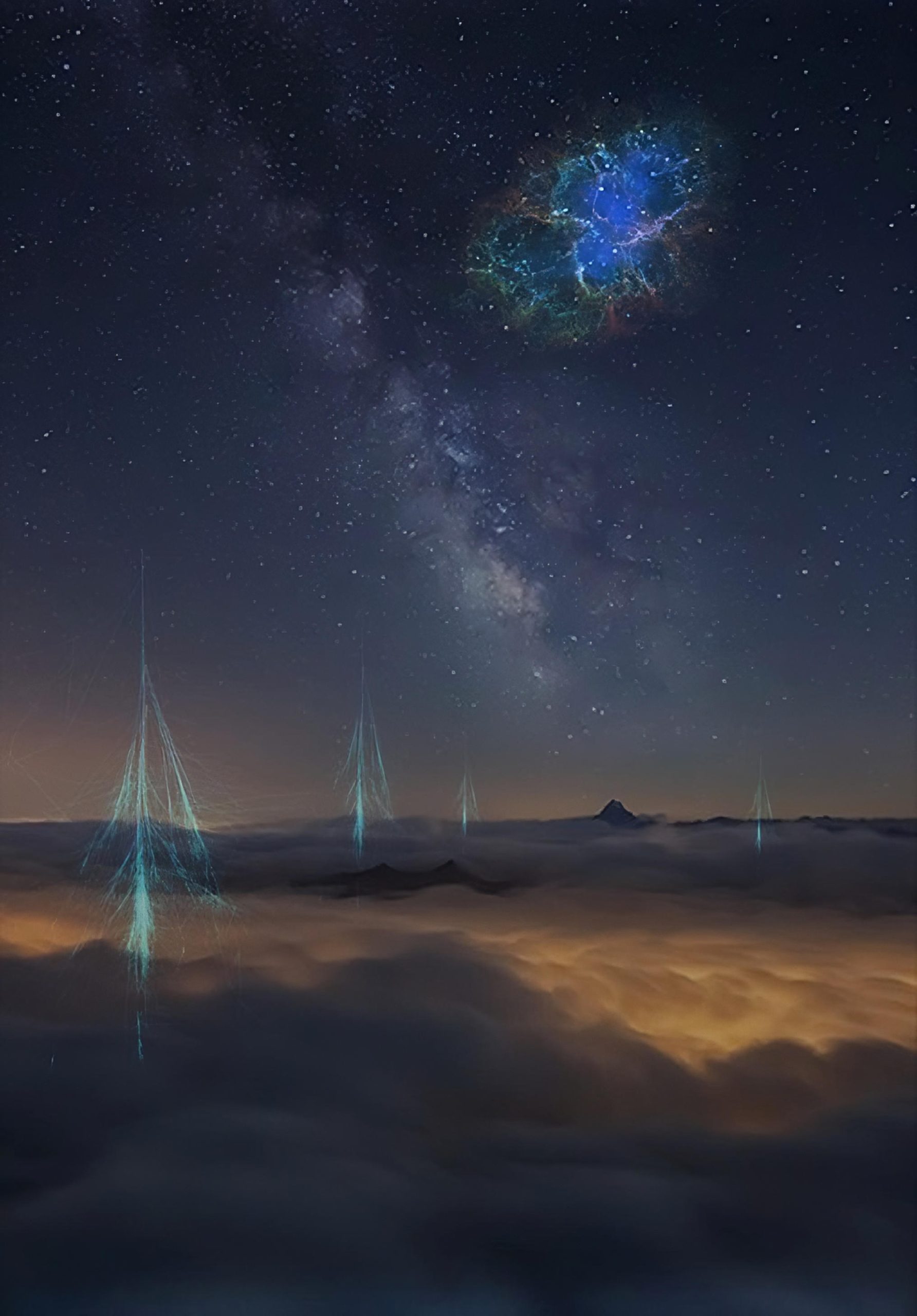
The extraterrestrial processes responsible for influencing the diversity of life forms are usually invisible to the human eye. The Milky Way is where massive stars explode, resulting in supernova remnants whose shock fronts accelerate cosmic ray particles to high energies. Cosmic rays find their way into the solar system, where some of them collide with the atmosphere producing cascades of secondary particles that ionize the atmosphere. The ions influence the formation of clouds which ultimately affects the climate. Therefore, changes in the activity of a supernova change the climate, which is responsible for mixing and transporting nutrients essential for life to ecosystems. Credit: Henrik Svensmark, DTU Space
A new study published in Ecology and evolution by Henrik Svensmark of DTU Space has shown that exploding stars, also known as supernovae, have greatly affected the diversity of marine life over the past 500 million years.
The fossil record has been studied extensively, revealing great differences in the diversity of life forms throughout geological history. The fundamental question in evolutionary biology is to identify the processes responsible for these fluctuations.
The new research makes a surprising discovery: fluctuation in the number of nearby supernovae corresponds closely with changes in the biodiversity of marine species over the past 500 million years. This association becomes apparent when the marine diversity curve is adjusted to account for changes in shallow coastal marine areas, which are important because they provide a habitat for most marine life and provide new opportunities for evolution with expansion or contraction. Thus, changes in available shallow marine areas play a role in shaping biodiversity.
“One possible explanation for the supernovae diversity link is that supernovae affect Earth’s climate,” says Henrik Svensmark, author of the paper and senior researcher at DTU Space.
“A large number of supernovae leads to a cold climate with a large temperature difference between the equator and the polar region. This results in stronger winds, mixing of the oceans, and the transfer of essential nutrients for life to surface waters along the continental shelf.”

Differences in relative supernova history (black curve) compared to diversity curves at the phyla level normalized to the area of shallow marine margins (shallow areas along coasts). The brown and light green curves represent major genus diversity of marine animals. Orange is diversity at the genus level of marine invertebrates. Finally, the dark green curve represents the genus-level diversity of all marine animals. Geological period abbreviations are Cm Cambrian, O Ordovician, S Silurian, D Devonian, C Carboniferous, P Permian, Tr Triassic, Jurassic, K Cretaceous, Pg Palaeogene, and Ng Neogene. Credit: Henrik Svensmark, DTU Space
The paper concludes that supernovae are essential for primary biological productivity by affecting the transport of nutrients. Total primary biological productivity provides energy to ecosystems, and speculation has suggested that changes in biological productivity may affect biodiversity. The current results are consistent with this hypothesis.
“New evidence suggests a relationship between life on Earth and supernovae, mediated by the influence of cosmic rays on clouds and climate,” says Henrik Svensmark.
Supernovae and climate
When massive stars explode, they produce cosmic rays, which are elementary particles of enormous energies. Cosmic rays travel to our solar system, where some end their journey by colliding with Earth’s atmosphere. Previous studies by Henrik Svensmark and colleagues referenced below show that it has become the primary source of ions that help form and grow the aerosols required in cloud formation.
Because clouds can regulate the solar energy that reaches the Earth’s surface, the cosmic ray cloud and aerosols influence climate. Evidence shows significant climatic shifts when the intensity of cosmic rays changes by several hundred percent over millions of years.
Reference: “The continuing impact of supernovae on biodiversity over the eons of life,” by Henrik Svensmark, March 16, 2023, Available here. Ecology and evolution.
doi: 10.1002/ece3.9898

“Typical beer advocate. Future teen idol. Unapologetic tv practitioner. Music trailblazer.”







More Stories
Boeing May Not Be Able to Operate Starliner Before Space Station Is Destroyed
How did black holes get so big and so fast? The answer lies in the darkness
UNC student to become youngest woman to cross space on Blue Origin